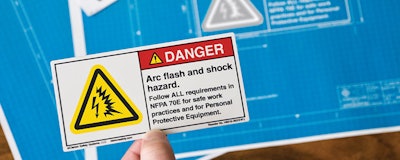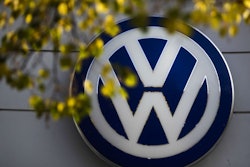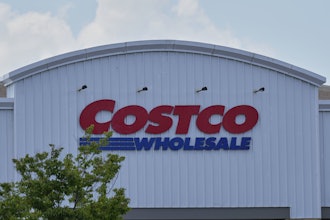
15 Safety Label Tactics for
Today’s Equipment Manufacturers
2When potential hazards can’t be eliminated from a product, warnings and instructions – including on-
product safety labels – are one of your means to communicate risk. As such, these safety labels play a
critical role in communicating safety and hazard information.
This guide will outline 5 tactics for creating the most effective labels possible. An effective label is
one that goes beyond being simply legally adequate; it follows industry standards and best practices in
order to improve product safety and reduce liability exposure. The overall goal: labels that can help to
prevent injuries and save lives.
2
Introduction: What are Effective Safety Labels
Tactic # 1: Understand the Value of Safety Labels
Tactic # 2: Analyze Your Audience to Better Define Label Content
Tactic # 3: Understand Standards-Driven Format Options
Tactic # 4: Use Symbols – And Choose Them Wisely
Tactic # 5: Select Materials for Your Specific Application
03
04
05
06
07
Table of Contents
3Of all the responsibilities product engineers are tasked with, safety labeling cannot be overlooked.
“Adequate warnings” are a necessary component of every product that has residual risk associated
with its lifespan. There are three essential purposes that an effective safety label should meet, and that
product safety engineers must understand:
1. Communicate hazards to protect those who interact with your product during its
anticipated lifecycle (delivery, installation, use, service, decommissioning, and disposal)
2. Enable companies to comply with their intended markets’ codes and regulations (such as
the Machinery Directive, CE marking, UL-compliance, and WEEE/RoHS) and
3. Provide a legal defense in the event of an accident. Here, it’s important to note that
“inadequate warnings” and “failure to warn” are two of the most common allegations found
in liability lawsuits in the U.S. today.
The bottom line is: if safety matters, your labels matter. Well-designed product safety labels are
essential to the success of a company in their efforts to ensure safety, reduce liability risk and
meet legal and market-driven requirements. To put it simply, people’s lives are on the line and your
company’s financial well-being can be at stake.
Designing effective safety labels can be a complex task – and it’s an ongoing process. Once your
system of safety labels is created, you must periodically re-evaluate them in light of changes to the
standards, new symbols that have become codified, and the latest available product safety and
accident information related to your product and its industry.
3
Tactic # 1: Understand the Value of Safety Labels
4Incomplete or inadequate safety label content can lead to accidents that result in personal injuries,
deaths, property damage and costly litigation. Before you begin defining the specific content of your
safety labels, it’s a good practice to analyze the characteristics of your intended user population. This
consists of all of the people who need to be protected from potential hazards associated with your
product, determined by the risk assessment process. Your product may have hazards associated with
more than its “use.” Safety information may need to be communicated to the people who will install,
maintain, clean, decommission and dispose of your product. Defining the expected characteristics
of those users, and tailoring your labels’ messages to meet their needs is an integral part of a well-
designed product safety label program. Your warnings will need to speak to all audiences – from
trained operators to less skilled workers – in terms they understand and in the places where they
could interact with potential hazards.
Analyzing your audience will help to better define your label content, especially:
• Text content so the label’s word message is written to meet expected
reading level and is clear, concise and actionable to the audience at hand.
• Text size as viewing distances impact how large or small the size needs to
be in order for a user to see and understand the content of your product’s
safety labels.
• Symbols to strengthen communication, whether it’s to ensure a message is
noticeable and stands out, or to help overcome language barriers.
4
Tactic # 2: Analyze Your Audience to Better Define Label Content
5Both U.S. and international standards have been written for product safety labels and you should use
them as the measure by which you make decisions concerning their format and content. Note that for
some products, there are industry-specific standards as well as multiple other laws, regulations, and
guides that may need to be considered. For the purposes of this guide, we’ll focus on the two primary
product safety label standards domestically and abroad.
If your products are marketed in the U.S., the ANSI Z535.4 Standard for Product Safety Signs and
Labels is the standard to look to for guidance on format and content. If you’re a product manufacturer
who exports outside of North America, you need to determine not only which safety label formats can
be used worldwide, but which make the most sense to use, given the requirements of your market and
the characteristics of your intended audience. The international standard for product safety labels,
ISO 3864-2 Graphical symbols – Safety colours and safety signs – Part 2: Design principles for product
safety labels, is an asset to manufacturers in nearly all industries, codifying a set of best practice
product safety label formats on a basis of worldwide acceptance.
The choice of which standards-based safety label formats to use on your products is decided by
determining which best convey your safety messages to your intended audience. Label formats that
are currently allowed by the ANSI and ISO standards include: symbol-only, symbol-with-text, symbol-
with-signal-word and symbol-with-text-and-signal-word. Remember: your legal obligation as a
product manufacturer is to meet or exceed the current versions of standards related to your products
when they’re placed into commerce. It’s important to be aware of the latest standards updates and
how they may affect your labels’ content.
5
Tactic # 3: Understand Standards-Driven Format Options
Clarion Safety Systems, LLC clarionsafety.com
Hazardous
voltage.
Follow lockout
procedure before
servicing.
Clarion Safety Systems, LLC clarionsafety.com
Hazardous
voltage.
Follow lockout
procedure before
servicing.
Clarion Safety Systems, LLC clarionsafety.com
Clarion clarionsafety.com
Examples of a few of the many best practice label formats options
6In the past decade, there’s been a growing movement in U.S. and international
product safety label design to use graphical symbols to convey information.
The reason for this trend is that symbols have significant advantages that
help to bring a higher degree of effectiveness to on-product warnings. These
advantages include:
• Overcoming language barriers: well-
designed graphical symbols have the ability to
communicate information effectively, without
words.
• Increasing “noticeability”: the first step in
achieving effective safety label communication
is for your intended audience to see your
label. Graphical symbols can be eye-catching,
making your labels stand out more than if they
consisted only of words.
• Clearer, more immediate communication:
symbols are processed by our minds in a
completely different way than words, which can
mean a quicker understanding of a message’s
meaning.
• Better decision-making: this, again, results
from the way symbols are processed mentally,
bringing about an unconscious emotive
response to the graphic.
• Legal and compliance benefits: the use of
graphical symbols to convey safety information
is gaining traction in legally-mandated
regulations all over the world.
Thoughtful decisions have to be made concerning how best to use symbols on
product safety labels. The complexity of your message and the characteristics
of your intended audience are major factors. Your decision will also involve
whether or not to convey your safety message with symbols alone or symbols
supplemented with text – and whether or not a standardized symbol exists for
your intended meaning.
6
Tactic # 4: Use Symbols – And Choose Them Wisely
7Your product safety labels must hold up to their expected environment of use or people will not be able
to read and understand their messages and the likelihood of accidents becomes more probable. No
matter the degree of effort that went into your product safety label design program, it will count for
nothing when it comes to defending your warnings in court if your safety labels prematurely degrade
or fall off your products.
A label’s performance is only as good as the materials that go into its manufacture. To achieve your
durability objectives, an understanding of environmental and surface conditions, as well as the latest
high-quality material options available, is needed.
A typical label has numerous layers, all of which must be compatible with one another to ensure a long
life. The “life” of a label is directly related to the life of your product. Common problems associated
with safety labels include fading inks, degrading overlaminates, and use of the wrong adhesives.
The key to choosing the right materials for your product safety labels revolves around your knowing
the expected environment of use, the anticipated lifespan of the product, and the space restrictions
and characteristics of the surface it is to be mounted upon. Once these variables have been defined, a
selection of materials can be tested for use.
7
Tactic # 5: Select Materials for Your Specific Application
According to ANSI Z535.4:
“….labels shall have a reasonable expected life with good color stability, symbol legibility, and word
message legibility…”
”Reasonable expected life shall take into consideration whether the safety sign is permanent or
temporary, the expected life of the product, and the foreseeable environment of use.”
Clarion Safety Systems
190 Old Milford Road
Milford, PA 18337
(800) 748-0241
clarionsafety.com
[email protected]
© Clarion Safety Systems LLC.
All rights reserved.
8
Clarion’s safety label systems embody best practice design principles defined by the latest industry standards,
standards we helped to write. For nearly 30 years, we’ve led both the U.S. and international efforts to harmonize
standards in the area of safety signs, labels and markings; this includes contributing to the leadership and
direction of ANSI, ISO, OSHA and NFPA safety codes.
Working directly with our clients, we’ve created systems of safety labels that effectively communicate their
specific safety requirements – all in the effort to reduce risk and protect people. There’s no greater goal. There’s
no greater reward.
Our Portfolio
- Risk assessment services
- Safety label assessment services
- Safety label customization services
- Product and machinery safety labels
- Additional professional services (translations, kitting and more!)
8
Why Clarion?
Unmatched Expertise. Unparalleled Experience.
28 Years in Business
15,000+ Clients
180+ Industries
Nearly 100 Million Signs and Labels Produced
0 Allegations of “Inadequate Warning”






















